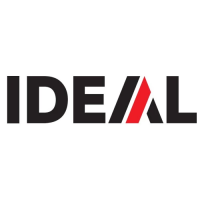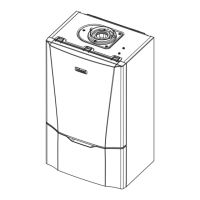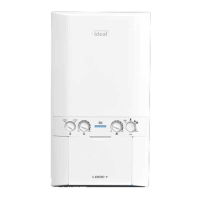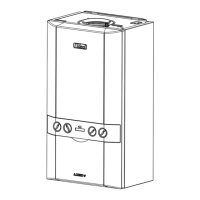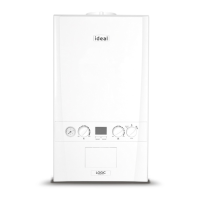general
1. The installation must comply with all relevant national and local
regulations.
2. The installation should be designed to work with flow
temperatures of up to 86
o
C.
3. All components of the system must be suitable for a working
pressure of 3 bar and temperature of 110
o
C. Extra care should
be taken in making all connections so that the risk of leakage is
minimised.
The following components are incorporated within the appliance:
a. Circulating pump.
b. Pressure relief valve, with a non-adjustable preset lift
pressure of 3 bar.
c. Pressure gauge, covering a range of 0 to 4 bar.
d. A 10-litre expansion vessel, with an initial charge pressure
of 0.75 bar.
4. ‘Make-up’ Water
The water connection and isolation valves incorporate an
approved system for lling and topping up the water in the
heating system. Refer to Frame 24 for details of how to ll
and top up the system.
The maximum cold water capacity of the system should
not exceed 159 litres, if not pressurized. However, if the
system is to be pressurized, the efciency of the expansion
vessel will be reduced and a larger vessel (or smaller system
volume) may be necessary. If the capacity of the vessel is
not considered sufcient for this, or for any other reason, an
additional vessel MUST be installed on the return to the boiler.
Guidance on vessel sizing is given in Table above.
5. Filling
The system may be lled by the following method:
Where the mains pressure is excessive a pressure reducing
valve must be used to facilitate lling.
Notes
a. The method of lling, relling, topping up or ushing sealed
primary hot water circuits from the mains via a temporary hose
connection is only allowed if acceptable to the local water
authority.
b. Antifreeze uid, corrosion and scale inhibitor uids suitable for
use with boilers having stainless steel heat exchangers may be
used in the central heating system.
2
sysTEM REqUIREMENTs - Central heating
pressure relief valve setting bar 3.0
Vessel charge pressure bar 0.5 to 0.75
system pre-charge pressure bar None 1.0
system volume Expansion vessel
(litres) volume (litres)
25 1.6 1.8
50 3.1 3.7
75 4.7 5.5
100 6.3 7.4
125 7.8 9.2
150 9.4 11.0
175 10.9 12.9
190 11.9 14.0
200 12.5 14.7
250 15.6 18.4
300 18.8 22.1
For other system volumes
multiply by the factor across 0.063 0.074
a. Thoroughly ush out the whole system with cold
water.
b. Fill and vent the system until the pressure gauge
registers 1bar and examine for leaks. Refer to Frame
24 for lling detail.
c. Check the operation of the safety valve by raising the
water pressure until the valve lifts. This should occur
within 0.3bar of the preset lift pressure.
d. Release water from the system until the
minimum system design pressure is reached;
1.0 bar if the system is to be pre-pressurised.
continued . . . . . .
Model 26 32 40
Max CH output kW
Btu/h
18
61400
26
88700
32
109200
Water ow rate
@ 20ºC differential
l/min
gal/min
13
2.9
18.6
4.1
22.9
5.0
Head available for
system
m.wg
ft.wg
4.4
14.4
2.5
8.2
1.2
3.9

